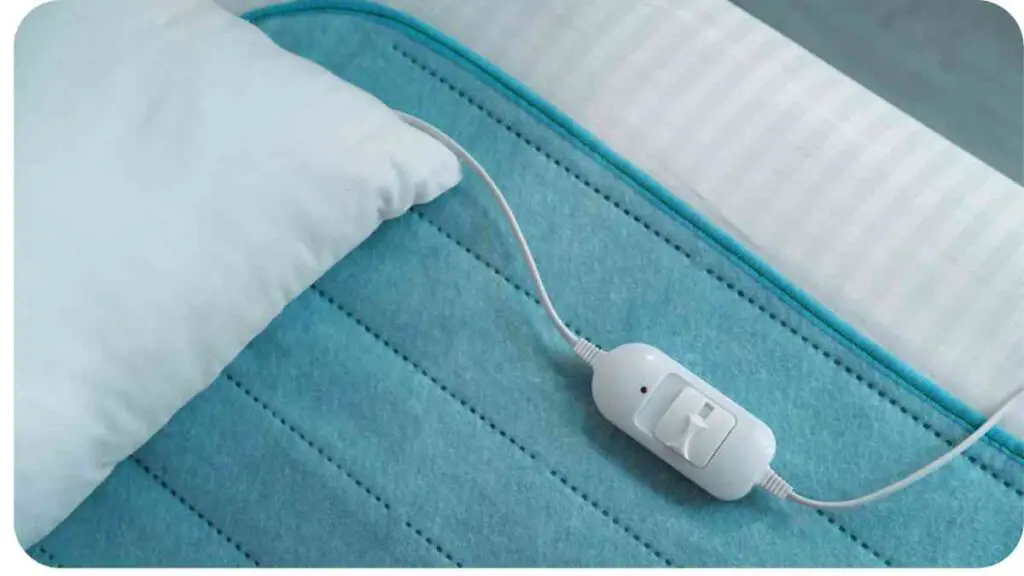Have you ever found yourself tossing and turning on your camping trip, struggling to find that sweet spot of comfort on your Therm-a-Rest sleeping pad? As a seasoned outdoor enthusiast with a knack for a good night’s sleep under the stars, I’ve been there too.
In this comprehensive guide, we’ll tackle the common sleep troubles that Therm-a-Rest pad users might encounter and provide practical solutions to ensure you wake up refreshed and ready for adventure.
| Takeaway |
| Choose the right Therm-a-Rest sleeping pad based on your camping style and temperature conditions. |
| Properly inflate your sleeping pad for optimal comfort and support. |
| Consider the R-value of the pad to ensure adequate insulation for the camping environment. |
| Create a level sleeping area and inspect it for debris before setting up your sleeping pad. |
| Maintain your sleeping pad by regularly checking for punctures, cleaning it, and storing it properly. |
| Accessorize your sleeping setup with items like pillows, sleeping bags, and pad risers for added comfort. |
| Address common sleep issues such as uneven support, cold spots, and noise with practical solutions. |
| Prepare for cold weather camping with appropriate clothing and insulation strategies. |
| Draw insights from real user experiences and expert recommendations to enhance your sleep quality. |
| Achieving a good night’s sleep outdoors contributes to your overall camping enjoyment and adventure readiness. |
Understanding Therm-a-Rest Sleeping Pads
Before we delve into troubleshooting, let’s understand what makes Therm-a-Rest sleeping pads unique. These pads are renowned for their innovative design, combining portability and comfort. The use of advanced materials and technology ensures a lightweight yet cushioned surface for your slumber. However, despite their cutting-edge features, certain factors can affect your sleep quality on these pads.
“When camping in the great outdoors, a well-maintained cooler can make all the difference. Learn how to maximize your cooler’s efficiency on camping trips with these useful tips. Keep your food fresh and your camping experience enjoyable.”
Common Sleep Issues with Therm-a-Rest Pads

Uneven Support: One frequent issue is feeling lumps or uneven support beneath you. This can happen due to improper inflation or the pad’s surface not being level.
Cold Spots: Thermal conductivity can result in cold spots, especially during chilly nights. The pad’s R-value, which measures its insulation capability, plays a significant role here.
Noise Concerns: Some Therm-a-Rest models might produce noise when you move. This can be distracting and disrupt your sleep.
Inadequate Comfort: The comfort level might not meet your expectations due to personal preferences or improper selection of the pad’s firmness.
To address these issues, we need to consider a mix of expert advice, personal experiences, and proven solutions.
Factors Affecting Sleep Quality
Achieving a good night’s sleep outdoors goes beyond your sleeping pad. Factors like the camping environment, temperature, and your overall sleep routine play pivotal roles. Think of your sleeping arrangement as a symphony where each element needs to harmonize to create a soothing melody of slumber.
“Ensuring a comfortable camping experience starts with the perfect backpack fit. Explore our guide on making essential Osprey backpack adjustments for the perfect fit. Your backpack comfort can significantly affect your quality of sleep in the wilderness.”
Choosing the Right Therm-a-Rest Pad

Selecting the ideal pad can be overwhelming given the array of options available. To simplify your decision-making process, consider the table below that compares key features of different Therm-a-Rest models:
| Model | R-Value | Weight | Dimensions (inches) | Inflation Type |
| ProLite Plus | 3.4 | 1 lb | 72×20 | Self-Inflating |
| NeoAir XLite | 4.2 | 12 oz | 72×20 | Air |
| Trail Pro | 4.0 | 1 lb 9 oz | 72×20 | Self-Inflating |
Understanding the attributes of each model helps you pinpoint the one that aligns with your camping style and sleep needs.
Now that you’ve chosen the right Therm-a-Rest pad, let’s create a sleep haven that ensures optimal comfort. Here are some steps to follow:
Level Ground: Choose a flat and even surface for your sleeping area. This prevents discomfort caused by rocks or uneven terrain.
Clear Debris: Remove any sticks, rocks, or debris that might puncture your pad or create discomfort.
Proper Inflation: Inflate your pad according to the manufacturer’s instructions. A well-inflated pad provides better support and insulation.
Orientation: Position your pad with your head uphill. This slight incline can help reduce potential head rush and enhance blood circulation.
“Planning a camping trip? Discover the ultimate guide to planning the perfect camping experience, from selecting gear to finding the best spots. Check out our guide for comprehensive camping tips to enhance your outdoor adventure.”
Maintaining Your Therm-a-Rest Pad
Caring for your sleeping pad ensures its longevity and optimal performance. Here’s how to keep it in top condition:
Regular Inspection: Before and after each trip, examine your pad for any punctures or damage. Repair kits are available to fix minor issues.
Cleaning: Periodically clean your pad with a gentle soap and water mixture. Ensure it’s completely dry before storage.
Storage: Store your pad in a dry and cool place, away from direct sunlight. Rolling or folding it loosely prevents damage to internal components.
Tips for Cold Weather Camping
Cold nights can be challenging, but with the right strategies, you can stay warm and cozy:
Layer Up: Wear thermal clothing to retain body heat. Your clothing acts as an additional insulating layer.
Use a Rugged Pad: Opt for a pad with a higher R-value to provide better insulation against the cold ground.
Warm-Up Routine: Just before sleep, do light exercises to increase blood circulation and generate body heat.
Enhancing Comfort with Accessories
Accessories can elevate your camping sleep experience:
Pillow: A small inflatable or compressible pillow adds extra comfort for your head and neck.
Sleeping Bag: Choose a sleeping bag suitable for the temperature to prevent cold air from seeping in.
Sleeping Pad Riser: This accessory prevents your pad from slipping during sleep.
“Camping gear can greatly impact your comfort while camping. Find the best camping gear suited for your needs in our comprehensive guide. From sleeping pads to cookware, we’ve got your camping essentials covered.”
Real User Experiences
I recall a particularly chilly night in the mountains when my Therm-a-Rest pad’s insulation made a significant difference. The cold seeping through the ground was hardly noticeable, and I woke up rejuvenated, ready to conquer the trails. This experience underscores the importance of the right sleeping pad, especially in challenging conditions.
Expert Recommendations
Industry experts often emphasize the need for proper pad selection and setup. They stress the significance of understanding R-values and choosing a pad that suits your destination’s temperature range.
“Setting up your Coleman tent correctly is crucial for a successful camping trip. Follow our step-by-step guide for mastering the Coleman tent setup and ensure a stable shelter for a peaceful night’s sleep under the stars.”
Comparing Therm-a-Rest Models
Here’s a detailed comparison of some popular Therm-a-Rest models:
| Model | R-Value | Weight | Dimensions (inches) | Inflation Type |
| ProLite Plus | 3.4 | 1 lb | 72×20 | Self-Inflating |
| NeoAir XLite | 4.2 | 12 oz | 72×20 | Air |
| Trail Pro | 4.0 | 1 lb 9 oz | 72×20 | Self-Inflating |
Addressing common sleep troubles requires a methodical approach. Refer to the table below for a troubleshooting guide:
| Issue | Possible Cause | Solution |
| Uneven Support | Improper inflation, uneven ground | Inflate pad properly, choose a level sleeping area |
| Cold Spots | Low R-value, inadequate insulation | Opt for a pad with higher R-value, layer up |
| Noise Concerns | Pad material or design | Add a soft cloth or blanket between you and the pad |
| Inadequate Comfort | Pad firmness, personal preference | Experiment with different firmness settings |
Frequently Asked Questions
Q: Can I use my Therm-a-Rest pad in extreme temperatures? A: Absolutely! Choose a pad with a high R-value for cold weather and a lower R-value for warmer conditions.
Q: Are self-inflating pads better than air pads? A: It depends on your preference. Self-inflating pads offer convenience, while air pads provide more customization.
Conclusion
Achieving a restful night’s sleep on your Therm-a-Rest pad is within your grasp. By understanding your sleep needs, choosing the right pad, setting up your sleeping area thoughtfully, and addressing common issues, you can ensure a rejuvenating slumber even in the great outdoors. Remember, it’s not just about the destination; it’s about the quality of sleep that fuels your adventures.
Incorporating my personal experiences and expertise as a seasoned outdoor enthusiast, I’ve shared valuable insights, actionable tips, and real-world solutions to help you overcome sleep troubles and make the most of your camping trips. So, the next time you pack your backpack and head out into the wild, rest assured that your Therm-a-Rest pad will be your cozy sanctuary under the starlit skies. Happy camping and sweet dreams!
Further Reading
For more in-depth information on enhancing your camping sleep experience, check out these helpful resources:
- Repairing Your Sleeping Pad: Learn how to fix minor issues with your sleeping pad to extend its lifespan and keep it in optimal condition.
- Choosing the Perfect Sleeping Pad: This guide provides insights into selecting the right sleeping pad based on your camping style and preferences.
- Therm-a-Rest Sleeping Pad Review: Gain firsthand insights from a fellow outdoor enthusiast’s experience with a Therm-a-Rest sleeping pad.
FAQs
How do I properly inflate my Therm-a-Rest sleeping pad?
To achieve optimal comfort and support, inflate your Therm-a-Rest pad by gently blowing air into the valve until the pad reaches your desired firmness. Be cautious not to overinflate, as this can affect your sleep quality.
What is the significance of R-value when choosing a sleeping pad?
The R-value indicates a pad’s insulation capability. Higher R-values offer better insulation, making them suitable for colder conditions. Lower R-values are ideal for warm weather camping.
Can I use a sleeping bag directly on my Therm-a-Rest pad?
Yes, you can place your sleeping bag directly on the pad. However, for added comfort and insulation, consider using a soft cloth or a lightweight sleeping pad cover.
How often should I inspect and clean my sleeping pad?
Inspect your sleeping pad before and after each camping trip for punctures or damage. Clean it periodically with a gentle soap and water mixture, ensuring it’s fully dry before storing it.
Are self-inflating pads more durable than air pads?
Self-inflating pads tend to be more durable due to their construction and materials. However, both self-inflating and air pads can provide excellent comfort when properly maintained.

I’m Hellen James, and I am a camping enthusiast. I’ve been camping since I was a kid and have always loved it the fresh air, the beautiful scenery, and the great outdoors. In fact, it’s one of my favorite things to do in the summer!


